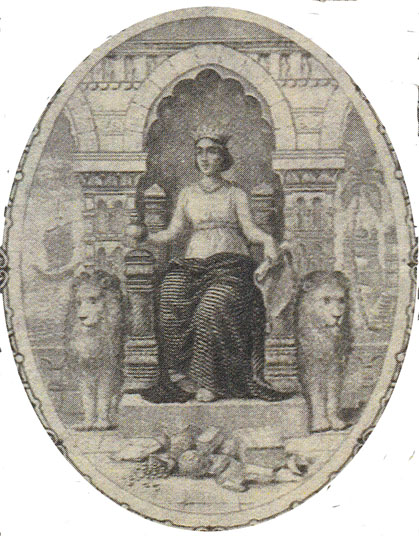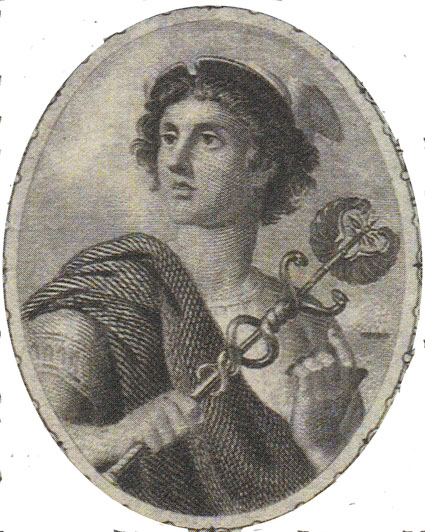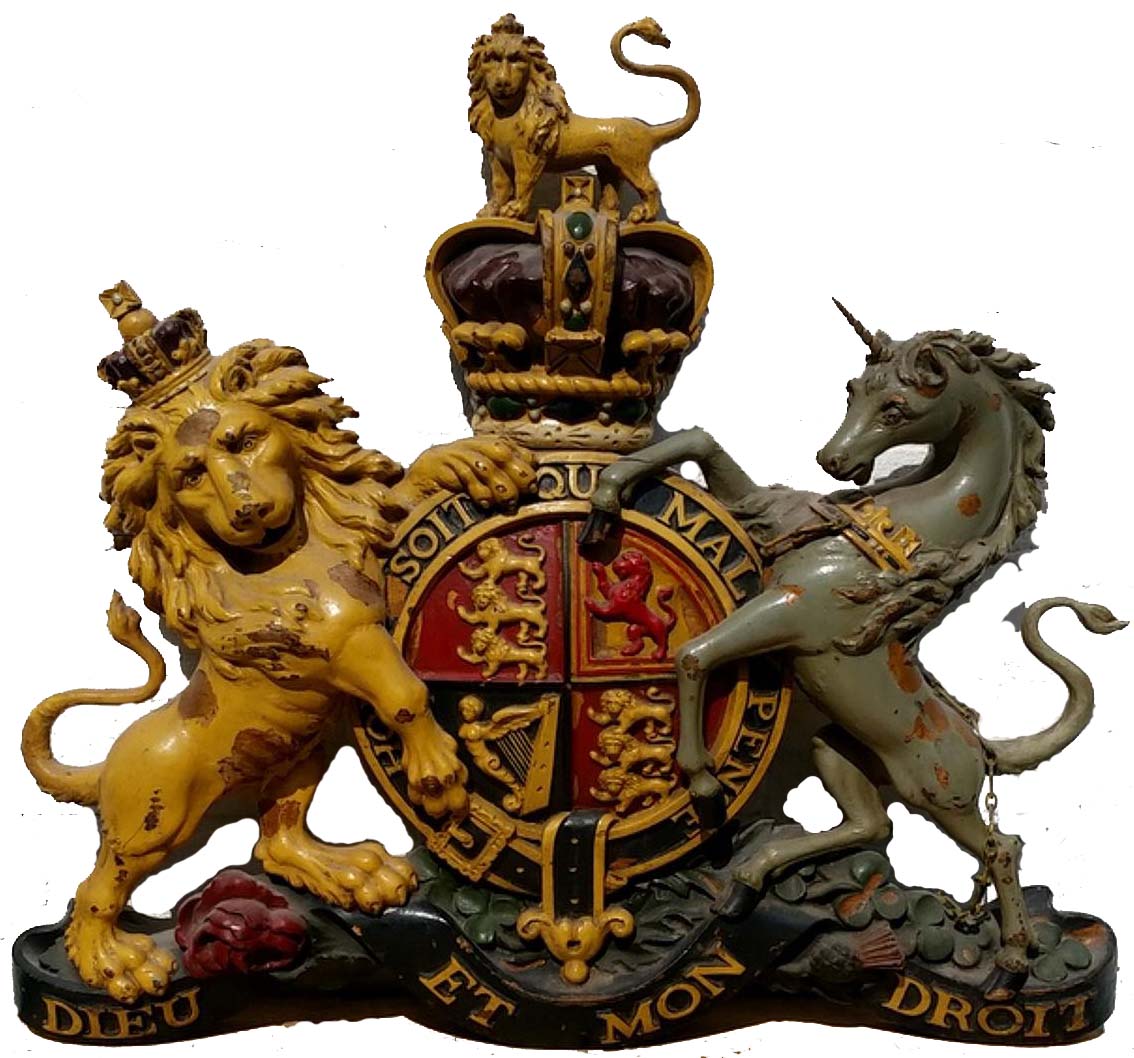

In 1846 the Oriental Bank, Ceylon Branch issued currency in Sterling 10 Shillings, 1 Pound, 5 Pounds, 10 pounds on Colombo that were printed by Batho & Bingley, 56 Lombard Street, London. Before charter they were signed by the Board of Directors.
The Name of Bank පුවෙදිග මුදල් නිධානය in Sinhala is translated as FarEast Cash Treasury, and கிழக்கு பங்க் (Kiḻakku paṅk = East Bank) in Thamil is partly Translated. It appears only in the first series of currency notes issued by the Oriental Bank - Ceylon Branch. The name is excluded in ALL subsequent note series issued by The Oriental Bank Corporation.
In 1849 The Oriental Bank took over the failed Bank of Ceylon which had printed
notes in 1844.
In 1851 it was granted a Royal charter in England as the Oriental Bank Corporation
(OBC)
focusing in Ceylon on providing loans to coffee plantations.
With Royal Charter OBC issued currency in Ceylon in Rupees signed by the Court of Directors. When legal tender was Sterling, it has the additional phrase or the equivalent in the Currency of the Island, which does not appear on notes after Decimal Currency was adopted in 1870.
The notes issued in Colombo used word Office while, notes issued by branches outside Colombo used word Branch and had additional phrase or at their Bank in Colombo. The notes issued for Colombo and Kandy Branch are signed by Manager. The Notes of all other branches signed by Agent.
The Initial set of notes in Pounds Sterling were printed in Batho & Bingley, London. Notes issued in 1850's in Colombo were undated. Printed by Perkins Bacon & Petch, London 5, 10, 50, 100, 1000 Rupees issued. The Rs 5 and Rs 10 notes had the logo of the Oriental Bank Corporation, while the higher denominations of Rs 50, Rs 100 and Rs1000 had the Royal Crest.
|
ORIENTAL BANK
CORPORATION |
Kandy Branch was also established in 1846. 5, 10, 50, 100 Rupees issued.
Jaffna Branch was established by 1864. 5 and 10 Rupees issued.
Badulla Branch was established by 1864. 5 and 10 Rupees issued.
Galle Branch was established by 1866. 5, 10, 50, and 100 Rupees issued.
Haldamulle Branch was established by 1870. 5 and 10 Rupees issued.
Newera Ellia Branch was established in 1876. 5 and 10 Rupees issued.
 | Design and layout of currency notes changed significantly in 1881 when Printing was taken over by Bradbury Wilkinson & Co Engravers &c. London. In addition to a slightly different Royal Crest, there were two vertical panels on either side, elliptical inserts with Queen Victoria enthroned as empress at left, Mercury with caduceus at right. |  |
Reverse was two toned and had medallic heads facing each other at center and value in ornate guilloches all over from large to microletering.
The Oriental Bank - Ceylon Branch
Uniface Printed by Batho & Bingley, London.
1846-1850 Colombo - 10s, £1, £5, £10
notes
The Oriental Bank Corporation
Uniface undated Printed by Perkins Bacon & Petch, London.
1851-1861 Colombo - Rs 5
proof
- Rs 50, Rs 100, Rs 1000
notes
1851-1861 Kandy - Rs 5
note
Biface dated before adoption Decimal
or the equivalent in the Currency of the Island
1862-1869 Colombo - Rs 5, Rs 10
notes
- Rs 50
note
1862-1869 Kandy - Rs 5, Rs 10
notes
1864-1869 Jaffna - Rs 5, Rs 10
notes
1864-1869 Badulla - Rs 5, Rs 10
notes
1866-1869 Galle - Rs 5, Rs 10
notes
- Rs 50, Rs 100
notes
1862-1869 Ceylon - Rs 5
proof
Biface dated after Decimal Rupee Currency
1870-1880 Colombo - Rs 5, Rs 10
notes
- Rs 100
note
1870-1880 Kandy - Rs 5, Rs 10
notes
1870-1880 Jaffna - Rs 5, Rs 10
notes
1870-1880 Badulla - Rs 5, Rs 10
note
1870-1880 Galle - Rs 5, Rs 10
notes
1870-1880 Haldamulla - Rs 5, Rs 10
notes
1876-1880 Ceylon - Rs 5, Rs 10
proofs (for Newera Ellia)
Biface dated Printed by Bradbury Wilkinson & Petch, Engravers &c. London.
1881-1884 Colombo - Rs 5, Rs 10, Rs 50, Rs 100
notes
1881-1884 Kandy - Rs 5, Rs 10, Rs 100
notes
1881-1884 Jaffna - Rs 5, Rs 10
notes
1881-1884 Badulla - Rs 5, Rs 10
notes
1881-1884 Galle - Rs 5, Rs 10, Rs 50
notes
1881-1884 Newera Ellia - Rs 5, Rs 10
notes
 The Bank of Western India opened in Bombay, India in 1842. Its purpose
was primarily foreign exchange a function that the EIC, possessing a
royal charter (a document from a monarch granting their discretionary
powers to a business entity), could not lawfully partake in. In 1845,
the bank took the name of the Oriental Bank and set up branches across
China, South Africa, Mauritius, Ceylon and Hong Kong. That same year,
the bank became the first note-issuing bank in Hong Kong.
The Bank of Western India opened in Bombay, India in 1842. Its purpose
was primarily foreign exchange a function that the EIC, possessing a
royal charter (a document from a monarch granting their discretionary
powers to a business entity), could not lawfully partake in. In 1845,
the bank took the name of the Oriental Bank and set up branches across
China, South Africa, Mauritius, Ceylon and Hong Kong. That same year,
the bank became the first note-issuing bank in Hong Kong.
The OBC continued to provide a dangerous amount of loans to local growers in spite of the explicit rules against doing so in their Royal charter. The yields in Ceylon coffee plantations fell victim to Hemileia vastatrix, the fungus that causes coffee leaf rust disease. The plantation owners could not make good on their debts, The OBC was forced to be baled out by the Government of Ceylon, which took over the the issue of currency in 1885. OBC shut down worldwide in 1892, the same year that HSBC started in Ceylon.
According to Spink Issued notes for the Oriental Bank Corporation are all extremely rare and the vast majority of issues are non-existent. There was a high priority for the government to redeem all the outstanding Oriental Bank notes in circulation in 1883. As a result despite the failure of the Bank virtually none have survived.
The British printer, Bradbury Wilkinson & Co, had in its archive, two complete sets of the banknotes printed for each branch of which one set was released to the numismatic collector market after 1985, before it was acquired by Thomas De La Rue in 1986.
Images mostly from Spink Auctions, particularly in 2011 April of 19th Century Ceylon Notes. It listed Signed and Remainders of the Oriental Bank Corporation, notes from Colombo and all other branches in Ceylon. On the day of this Auction, the anonymous owner of collection cancelled it.
Text from Auction catalog
PMG Notes OBC
Auction Images at about 67 dpi displayed at 50 dpi.